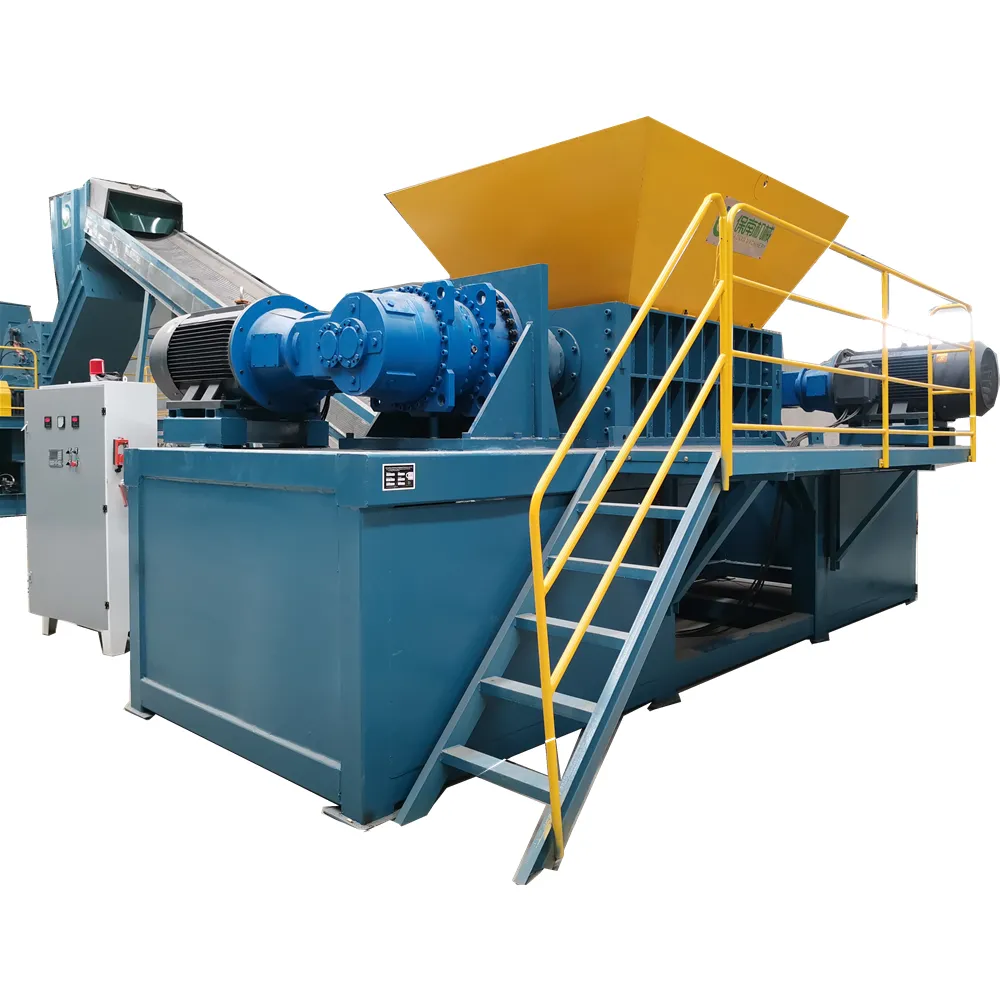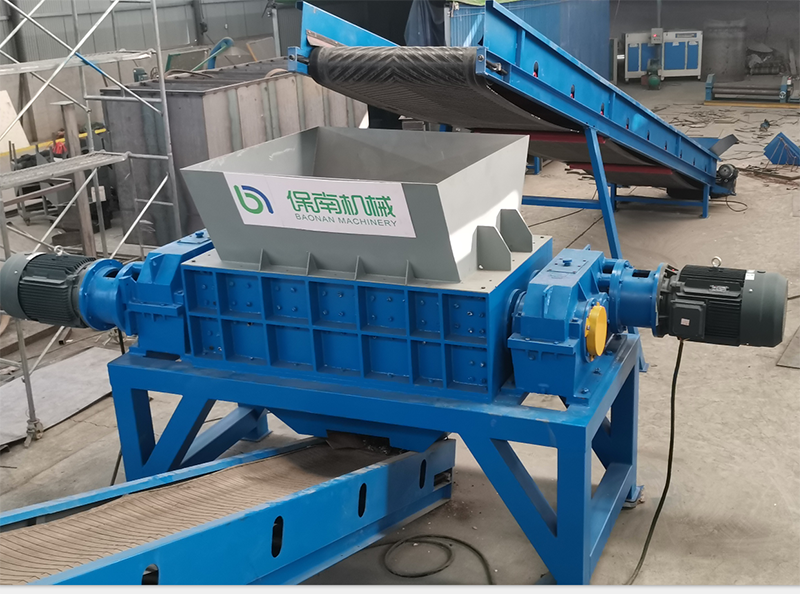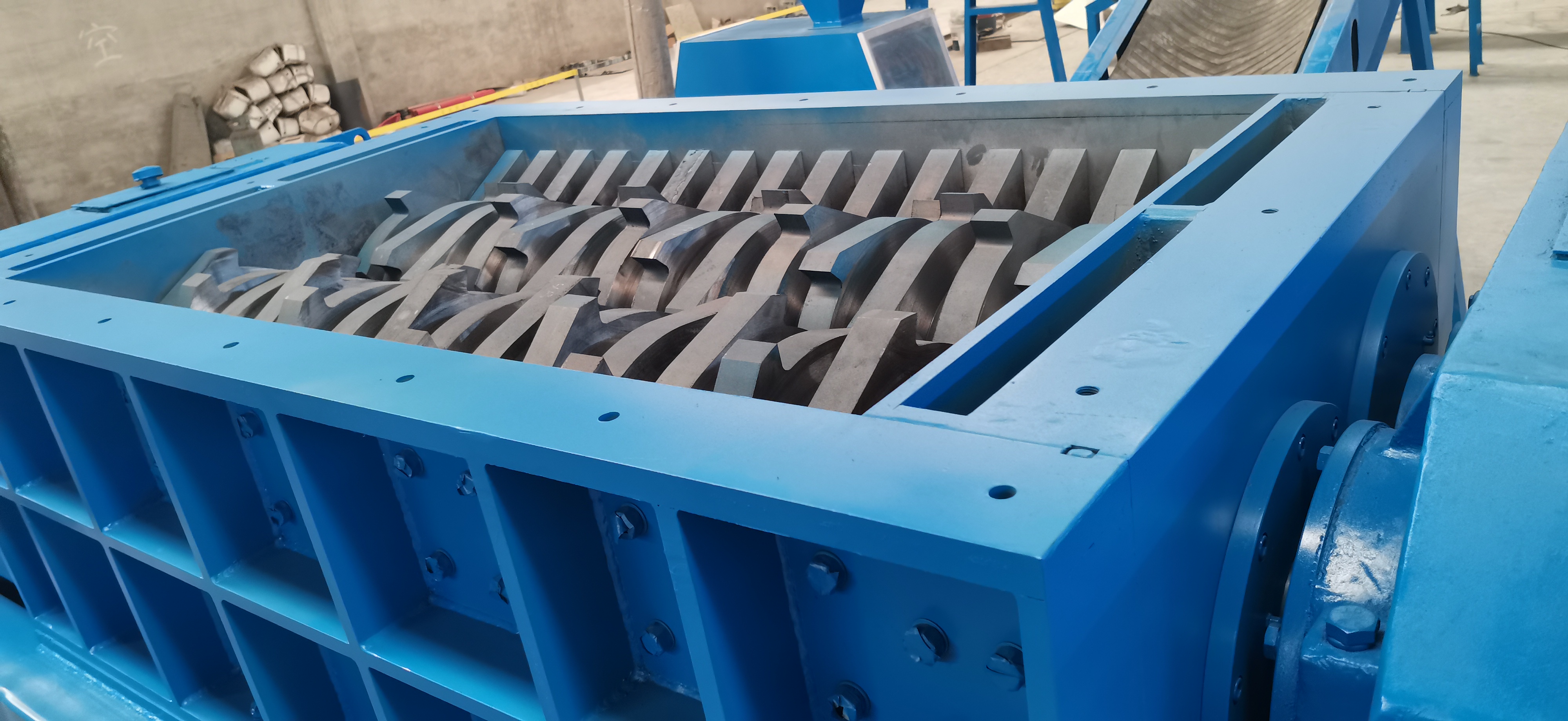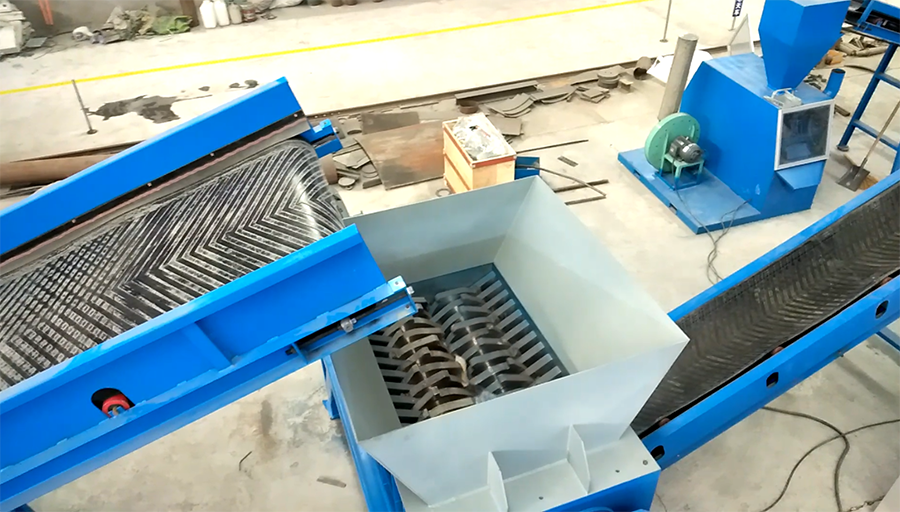

Ogo . 29, 2025 04:00 Kembali kepada senarai
The demand for efficient waste management and material recovery solutions has propelled the double shaft shredder machine to the forefront of industrial processing. These robust machines are engineered to handle a wide array of challenging materials, from solid waste and industrial scrap to plastics and electronic waste, transforming bulky items into smaller, more manageable particles for further processing, recycling, or disposal. Their design emphasizes powerful cutting capabilities, durability, and operational reliability, making them indispensable across numerous heavy industries. As businesses increasingly prioritize sustainable practices and resource optimization, the adoption of advanced shredding technology becomes a critical component of their operational strategy. This comprehensive overview delves into the intricate details of double shaft shredders, exploring their manufacturing, applications, technical merits, and market considerations for B2B decision-makers.
The global waste management industry is undergoing significant transformation, driven by stricter environmental regulations, increasing waste volumes, and a growing emphasis on circular economy principles. This paradigm shift directly impacts the market for industrial shredding equipment, particularly for the double shaft shredder machine. We are observing several key trends:
The market is also witnessing increased competition, leading to a focus on competitive double shaft shredder machine price points while maintaining high performance and reliability. The demand for a double shaft shredder for sale continues to grow globally, particularly in emerging economies where waste management infrastructure is rapidly developing.
The production of a high-quality double shaft shredder machine is a complex, multi-stage process demanding precision engineering and stringent quality control. It begins with raw material selection and extends through assembly and rigorous testing.
High-grade alloy steels (e.g., CrNiMo alloys, D2 tool steel) are selected for critical components like shredder shafts and double shaft shredder blades due to their exceptional wear resistance and toughness. The machine frame typically utilizes robust structural steel (e.g., Q345B, S355). Materials undergo initial inspection for chemical composition and mechanical properties, adhering to standards like ASTM A514 or EN 10025.
Precision bearings (e.g., SKF, FAG), gearboxes, and high-torque electric motors are integrated with the shredded shafts. The two counter-rotating shafts are meticulously aligned to ensure synchronized cutting action. Hydraulic drive systems, if present, are installed and tested for leak-free operation and pressure integrity. Electrical control panels, incorporating PLCs and safety interlocks, are wired and configured to IEC standards.
Each double shaft shredder undergoes extensive testing:
Throughout these stages, adherence to international standards such as ISO 9001 for quality management and ISO 14001 for environmental management ensures a consistently high-quality and reliable end product. The typical service life of a well-maintained double shaft shredder can exceed 15-20 years, with critical components like blades requiring periodic replacement depending on material aggressiveness and operational hours.

Image 1: Advanced engineering and robust construction define a high-performance double shaft shredder machine.
Understanding the detailed technical specifications is crucial for selecting the appropriate double shaft shredder for specific operational requirements. Key parameters influence performance, throughput, and the quality of the shredded output.
| Parameter | OW-DS2000 (Example Medium-Duty) | OW-DS3000 (Example Heavy-Duty) |
|---|---|---|
| Motor Power (kW) | 2 x 37 kW (Total 74 kW) | 2 x 75 kW (Total 150 kW) |
| Shaft Speed (RPM) | 8-15 RPM (Adjustable) | 6-12 RPM (Adjustable) |
| Shredding Chamber Size (mm) | 2000 x 1200 mm | 3000 x 1800 mm |
| Blade Material | D2 / SKD-11 High Alloy Steel | 42CrMo / Tungsten Carbide Inserts |
| Blade Hardness (HRC) | 58-60 | 60-62 |
| Throughput Capacity (tons/hour) | 5-15 (Material Dependent) | 15-30+ (Material Dependent) |
| Discharge Particle Size (mm) | Variable, 50-200 mm | Variable, 80-300 mm |
| Hydraulic System Pressure (MPa) | 16 MPa | 20 MPa |
| Weight (approx. tons) | ~8-12 tons | ~15-25 tons |
| Noise Level (dBA) | Typically | Typically |

Image 2: Close-up of high-strength shredding shafts and blades, critical components of any double shaft shredder.
These specifications highlight the robust engineering behind a double shaft shredder. Parameters such as motor power, shaft speed, and blade configuration are critical for determining the machine's capacity to handle various material types and desired output sizes. Higher motor power and robust blade materials like D2 tool steel or tungsten carbide are essential for processing tough or abrasive materials, ensuring both efficiency and longevity, thereby influencing the double shaft shredder machine price.
The inherent design of the double shaft shredder provides distinct technical advantages that set it apart in the industrial shredding landscape:
The versatility of the double shaft shredder machine makes it an invaluable asset across a diverse range of industries, addressing various waste reduction and material processing needs.

Image 3: A double shaft shredder machine effectively processing a variety of industrial waste materials.
Choosing the right double shaft shredder supplier involves more than just comparing initial double shaft shredder machine price points. It requires a holistic evaluation of product quality, customization capabilities, after-sales support, and long-term operational costs.
| Feature Category | Premium Vendor (e.g., OW Recycling) | Standard Vendor | Budget Vendor |
|---|---|---|---|
| Blade Material & Durability | D2/SKD-11 (HRC 58-62) with option for Tungsten Carbide inserts; multi-edge design for extended life. | 42CrMo (HRC 55-58); standard single-edge design. | Common alloy steel (HRC |
| Gearbox & Drive System | Heavy-duty, high-torque planetary gearbox (e.g., SEW, Nord); advanced overload protection. | Standard industrial gearbox; basic overload protection. | Basic gear reduction unit; limited overload protection. |
| Customization Options | High degree (blade geometry, motor power, shredding chamber, output size, material-specific features, remote monitoring). | Moderate (limited blade types, minor power adjustments). | Minimal (fixed configurations). |
| Control System & Automation | PLC with HMI, variable speed drives, remote diagnostics, smart sensors for predictive maintenance. | Basic PLC with push-button controls, essential safety features. | Relay-based, manual controls. |
| Certifications & Compliance | CE, ISO 9001, often localized certifications (e.g., UL, EAC). | Basic CE or regional safety certifications. | Often self-declared or limited certifications. |
| After-Sales Support | Global service network, 24/7 technical support, extensive spare parts inventory, preventative maintenance programs. | Regional support, standard business hours, limited spare parts. | Basic support, long lead times for parts. |
| Energy Efficiency | IE3/IE4 motors, optimized blade geometry, smart power management. | IE2/IE3 motors, standard geometry. | IE1/IE2 motors, basic geometry. |
Premium manufacturers understand that a one-size-fits-all approach is rarely effective for industrial shredding. Customization ensures that a double shaft shredder machine is perfectly aligned with specific operational needs, material characteristics, and desired output. Key areas of customization include:
Leading vendors work closely with clients, often leveraging their decades of experience (e.g., 20+ years in the industry) and extensive R&D, to provide solutions that are not only technologically advanced but also economically viable, ensuring optimal return on investment.
Practical applications demonstrate the effectiveness and economic benefits of investing in a reliable double shaft shredder machine.
A large-scale MSW processing facility faced challenges with bulky, heterogeneous waste streams causing frequent blockages and wear on their previous shredding equipment. They installed an OW-DS3000 double shaft shredder with custom-hardened blades and a 150 kW dual-motor drive.
A specialized facility recycling large plastic purgings, drums, and thick-walled pipes encountered difficulties in pre-processing materials to feed their granulators. They needed a powerful primary shredder to handle large, dense plastic items.

Image 4: Operational view of a double shaft shredder in a recycling facility, demonstrating material processing capabilities.
Building trust with B2B clients requires transparency and robust support infrastructure. We address common concerns regarding the acquisition and operation of a double shaft shredder.
Q: What materials can a double shaft shredder process?
A: Our double shaft shredders are designed for extreme versatility, capable of processing a wide range of materials including industrial plastics (film, pipes, purgings), wood (pallets, timber), tires, electronic waste, municipal solid waste, medical waste, and various metal scraps. Specialized blade configurations can be tailored for unique material challenges.
Q: How do your double shaft shredder blades compare in lifespan?
A: Our double shaft shredder blades are manufactured from high-grade D2 or SKD-11 alloy steel, heat-treated to HRC 58-62 for superior wear resistance. With proper maintenance and depending on the material shredded, our blades typically achieve 3,000-5,000 hours of operation before requiring resharpening or replacement. Options with tungsten carbide inserts further extend this lifespan, providing a significant advantage in total cost of ownership.
Q: What is the typical lead time for a double shaft shredder machine?
A: For standard models, our lead time typically ranges from 8 to 12 weeks from order confirmation to shipment. Customized solutions may require 12 to 18 weeks, depending on the complexity of engineering and component sourcing. We maintain transparent communication throughout the fulfillment process, providing regular updates on production milestones.
Q: What warranty is provided with your double shaft shredder?
A: We offer a comprehensive 12-month warranty on all mechanical and electrical components from the date of commissioning or 18 months from shipment, whichever comes first. This warranty covers defects in material and workmanship under normal use and service. Extended warranty options are available upon request.
Q: What kind of after-sales support do you offer?
A: Our commitment extends beyond the sale. We provide extensive after-sales support including:
The double shaft shredder machine stands as a cornerstone in modern industrial waste management and material processing. Its robust design, high-torque capabilities, and versatility make it an indispensable tool for businesses aiming to optimize their recycling processes, reduce waste volume, and enhance resource recovery. From precision manufacturing using high-grade materials and advanced CNC techniques to rigorous testing and comprehensive after-sales support, the development and deployment of these machines reflect a commitment to efficiency, durability, and environmental responsibility. As industries continue to evolve, the demand for advanced shredding solutions will only grow, underscoring the critical role of the double shaft shredder in forging a more sustainable future.
Berita terkini
Industrial Double Shaft Shredder Machine: Powerful & Efficient Shredding
BeritaAug.29,2025
High-Efficiency Copper Wire Granulators | Best Price for Sale
BeritaAug.28,2025
Eddy Separator for Non-Ferrous Metals
BeritaAug.22,2025
E Waste Bin for Collected Spray Cans: Sustainable Disposal Solutions
BeritaAug.22,2025
Dual Shaft Shredder with Adjustable Blade Gaps
BeritaAug.22,2025
Hammer Crusher Machine With Secondary Crushing
BeritaAug.22,2025